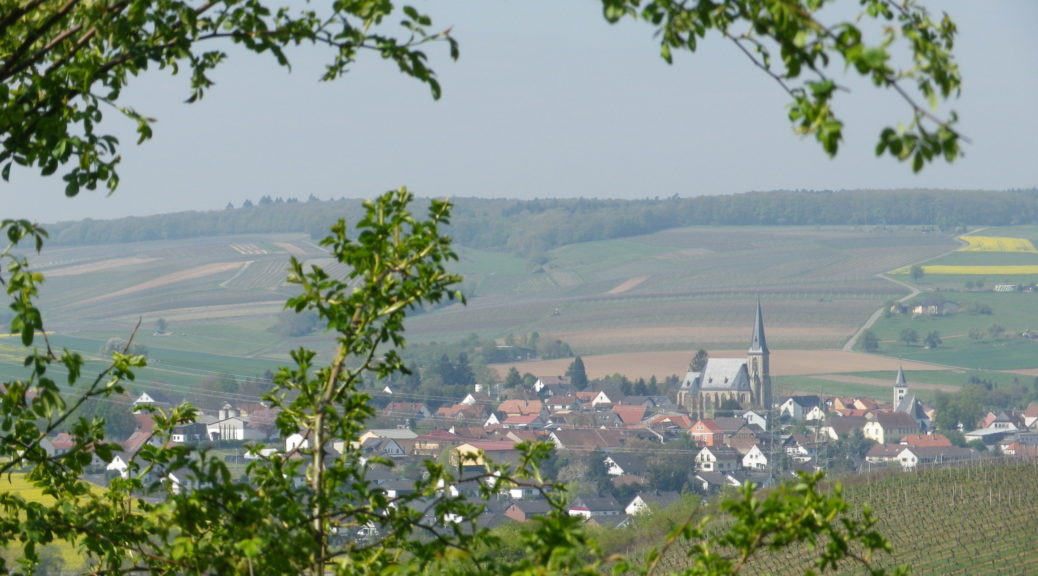Nearby were the vineyards, while far off in the distance lay the Rhine and its famous vineyards. In between were peaceful, expansive sections of woods. These were my first impressions. What these all had in common was the Wald, Wein und Horizonte (Woods, Wine and Horizons) hiking trail, a 17.5 kilometer-long trail circling some of the well-known vineyard areas of the Nahe River Valley.
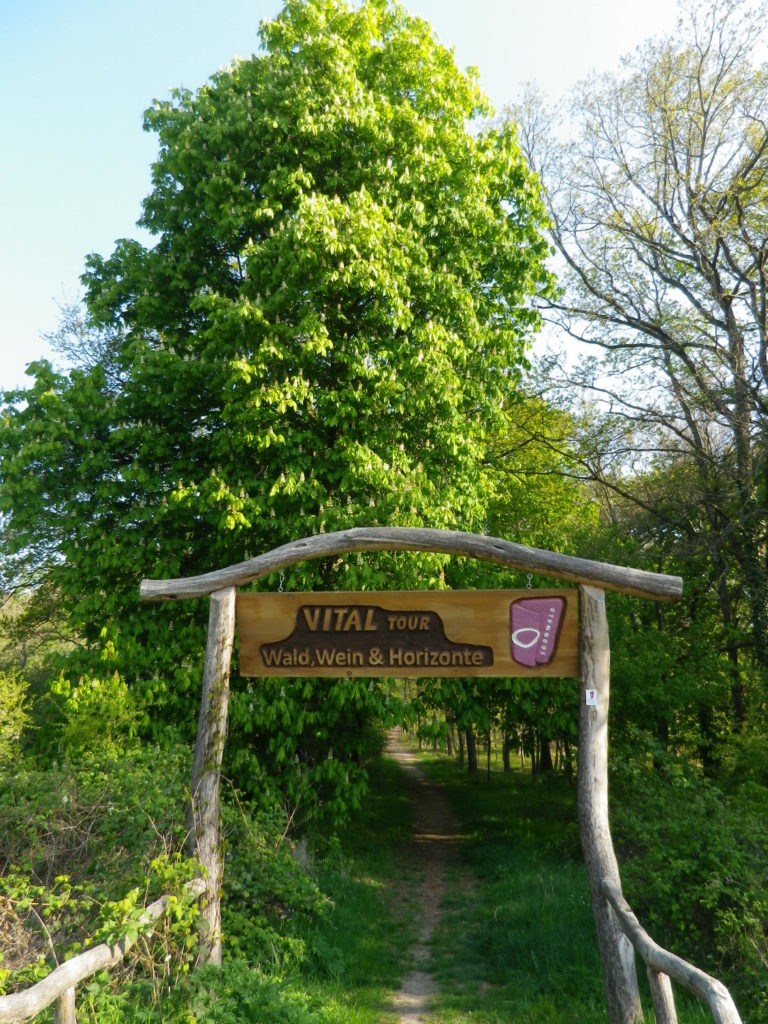
Most people don’t know about this area. It is quiet, and doesn’t attract many tourists. (Most of them will hug the famous banks of the relatively nearby Upper Middle Rhine River valley.) But this area has its attractions as well. Not far from the trail is Bad Muenster am Stein, a small spa town nestled in a bend of the river. It has an amazing castle, reached by means of a very short ferry trip across the Nahe. A short walk across the river to the west, is the town of Ebernburg. Its castle hosts a medieval festival and market attended by faithful fans every September. Langenlonsheim, nearer to the trail, doesn’t have a castle, but it does have this trail, one of the finest, family-friendly circuit hiking trails I have seen in Germany.
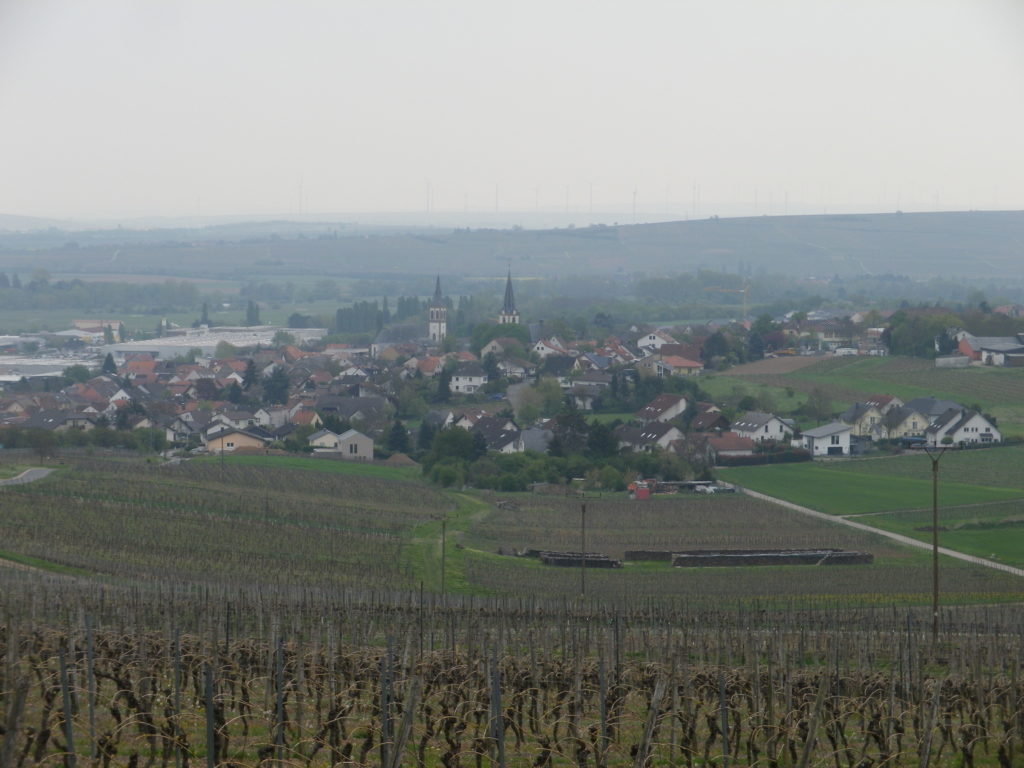
Langenlonsheim is conveniently connected to Bingen on the Rhine with train connections. However, the station is relatively far from the trailhead, being about two kilometers distant. It is also an uphill climb to reach the trailhead. But once there atop the ridgeline, only one or two other climbs follow. From those heights too, come the amazing “horizon” views. The first one, the “Rheinblick” looks out to the Rhine River Valley. Another further on, looks west in the direction of the Soonwald, one of the well-known forests of the Hunsrueck area lying between the Rhine and the Moselle Rivers. The final one faces south, with a view over the vines and across the narrow Guldenbach creek, a tributary to the Nahe.
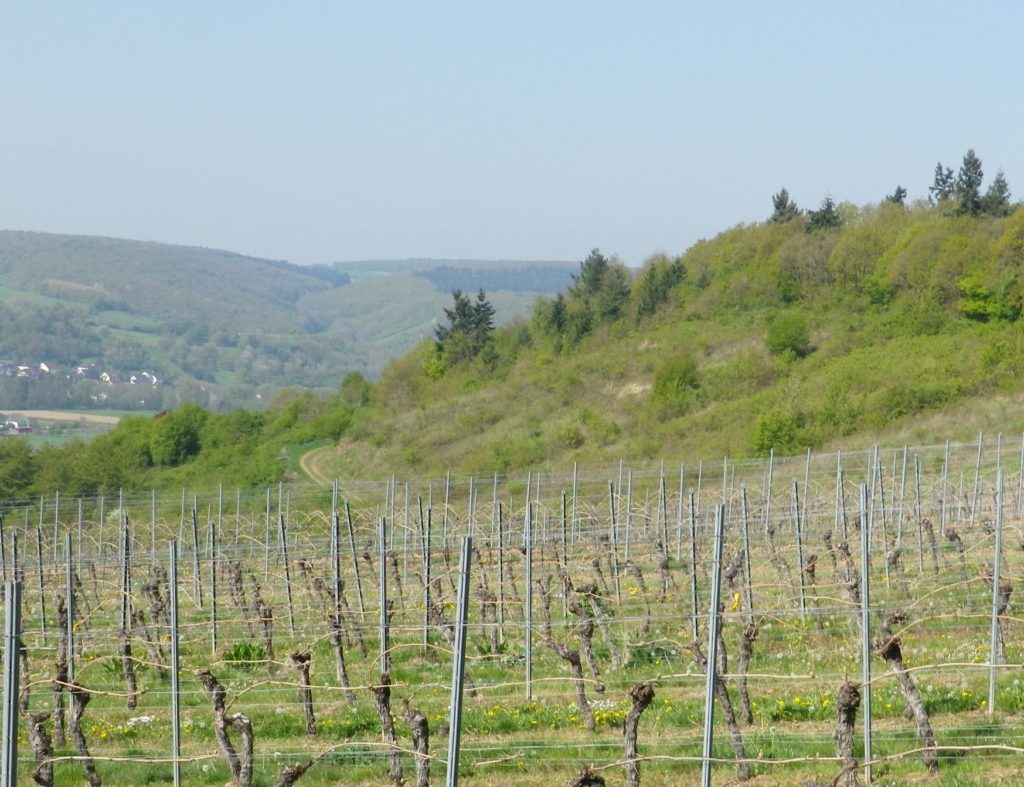
As it is within the Nahe Wine Region, this trail often went through or by vineyards. These were more extensive than I had thought they would be. I was surprised to walk along the edge of one of the largest natural bowls I had ever seen. Great terrain for vines, no surprise they were so plentiful there.
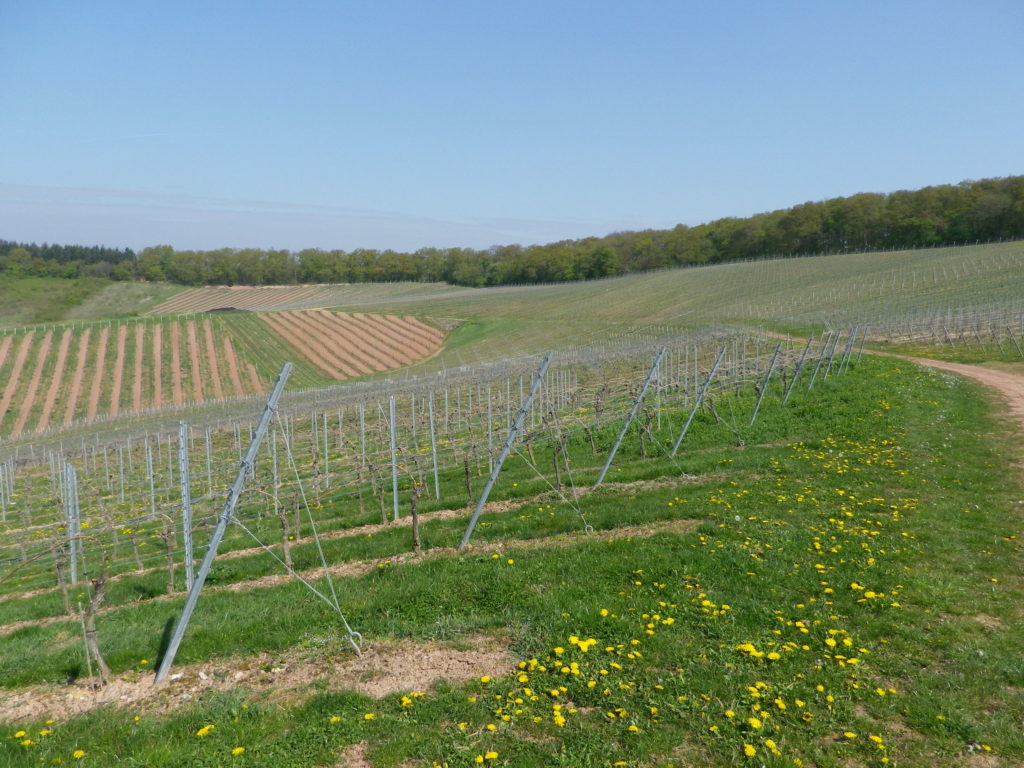
Other surprises awaited discovery nearby. Far from the center of Windesheim, in the forest above the village, were two Jewish cemeteries. These were near two mound-graves dating to the Iron Age. From the far distant past, to a nearer age, people have apparently laid their dead to rest atop this hill with such encompassing vistas. Signboards provide a bit of explanation, here and at other sites of interest along the trail.
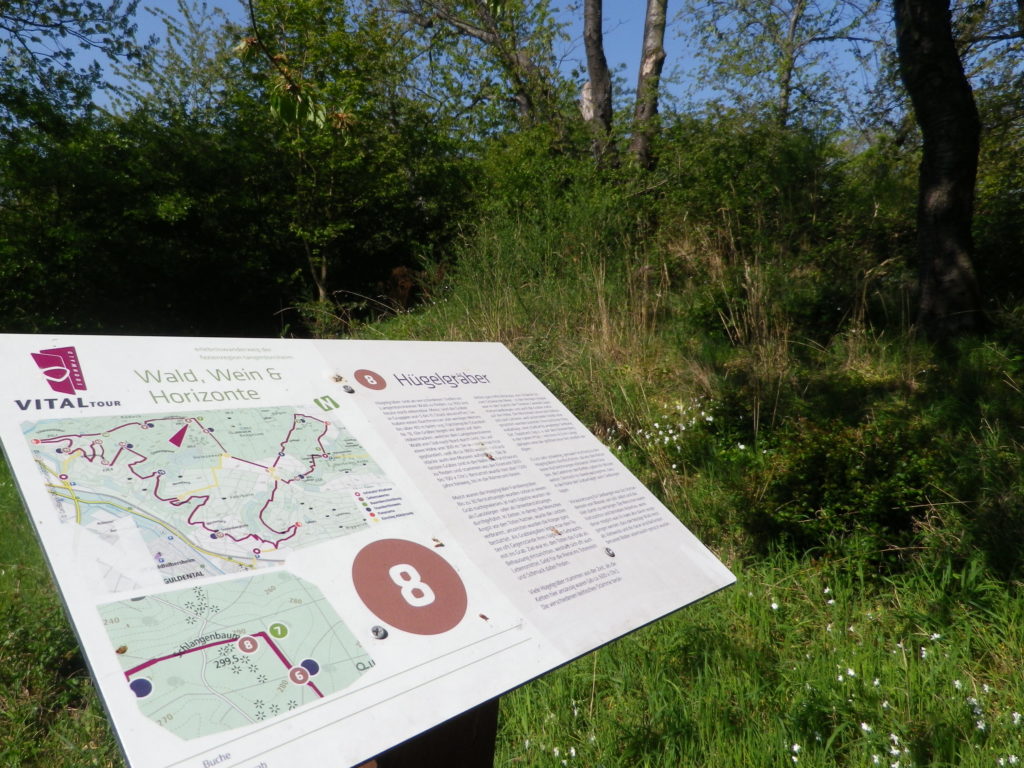
From forests to look-out points to vineyards, the trail covered time and distance, near and far, through a delightful variety of rural settings. So close, and yet so far, in little known wine region in Germany.
